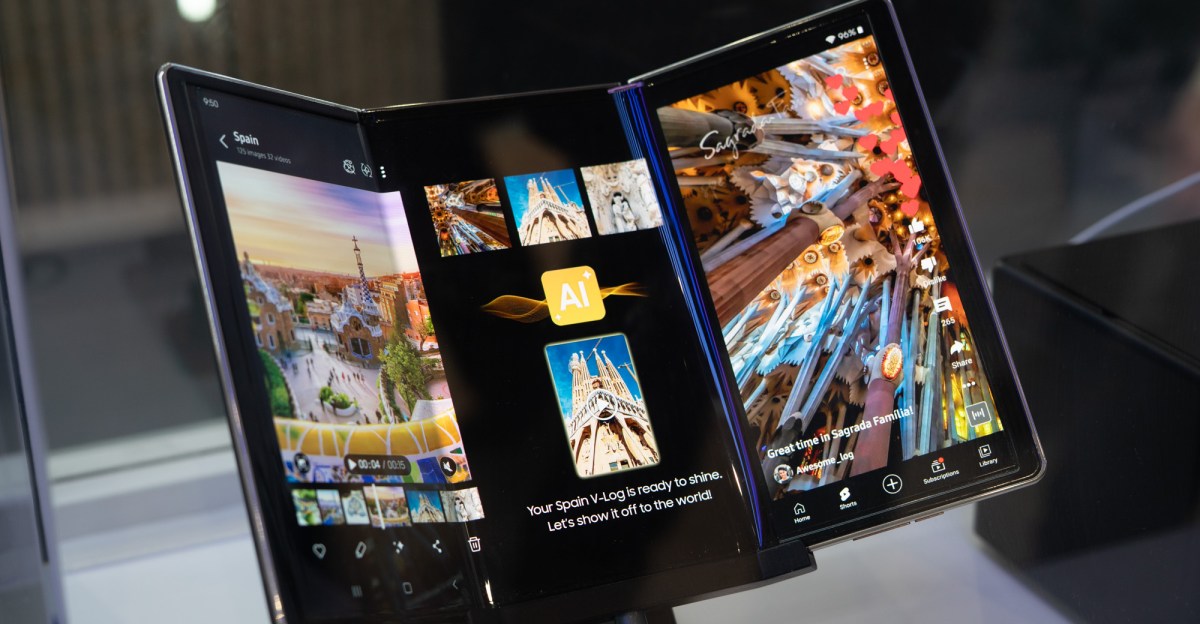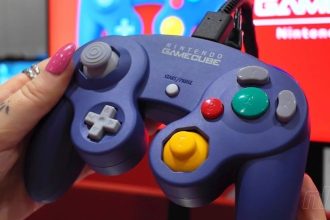Samsung may have unintentionally provided a glimpse of its anticipated “multifold” device in the recent One UI 8 update. Animations identified by Android Authority reveal potential details about the company’s trifold flagship, showcasing its dual-hinge folding mechanism, display configuration, camera arrangement, and NFC location.
Tentatively named the “Galaxy G Fold,” the device appears to be referred to as the “Multifold 7” in the animation files associated with One UI 8. Samsung first introduced the new foldable concept during its Unpacked event in January, where it displayed a basic illustration that aligns with the design seen in these recent leaks.
The leaked animations depict a three-panel device featuring a prominent triple-camera setup located on the rear of the right-hand panel when fully unfolded. Furthermore, the animations suggest that the NFC chip will also be integrated into this panel. The central display is likely intended as the cover screen, which includes a front-facing camera accessible when the phone is folded. Upon full extension, the front-facing camera sits on the right side, coinciding with where the rear camera setup is positioned.
One of the animations notably illustrates the folding mechanism, featuring two varying-sized hinges. This setup implies that the left-hand display folds inward, pinning the right-hand display beneath it. Warning messages in another animation advise against folding the right-hand panel first, as this could lead to the camera module obstructing a smooth fold and risks damaging the device due to the left-hand display’s inability to fold completely.
Interestingly, the left-hand panel appears blank on the rear, creating a flat surface for the right panel to fold over. This design contrasts with the Z-shaped folding mechanism seen in the Huawei Mate XT Ultimate Design, which launched last September as the first commercially available trifold phone. The Mate XT offers flexibility to utilize one, two, or all three panels simultaneously, but at the expense of leaving part of the panel exposed, thereby increasing its vulnerability compared to Samsung’s proposed structure.












